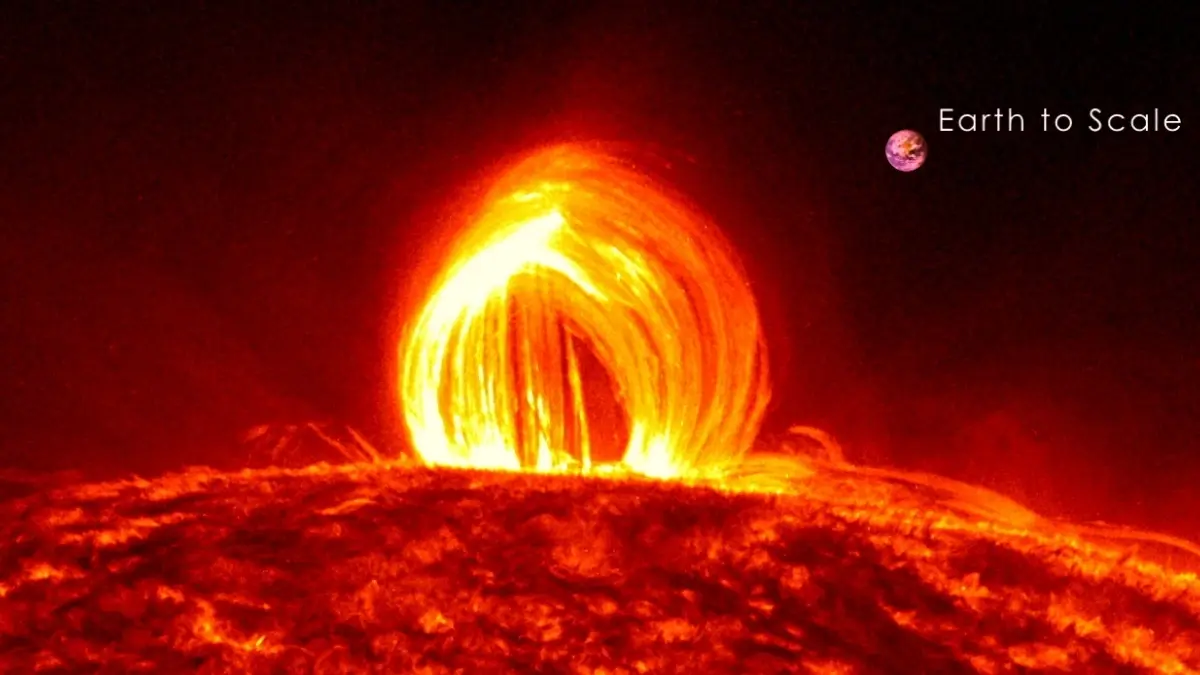 Inconceivable: on the —a gigantic, hot, thermonuclear sphere—there is also rain. This rain, made of superheated plasma, is known as coronal rain, as it forms in the corona of our star—the outer layer of its atmosphere. Researchers from the Institute for Astronomy (IfA) at the University of Hawaii have reported that this phenomenon is linked to the rapid movement of elements such as iron, silicon, and magnesium.
Inconceivable: on the —a gigantic, hot, thermonuclear sphere—there is also rain. This rain, made of superheated plasma, is known as coronal rain, as it forms in the corona of our star—the outer layer of its atmosphere. Researchers from the Institute for Astronomy (IfA) at the University of Hawaii have reported that this phenomenon is linked to the rapid movement of elements such as iron, silicon, and magnesium.
Scientists explained that rain on the Sun is somewhat similar to rain on Earth. It consists, in particular, of “cooled” dense droplets that fall from the Sun’s corona to its surface.
But overall, it’s a completely different phenomenon
Thus, solar rain consists of plasma—electrically charged gas with temperatures reaching millions of degrees. When coronal rain falls, it reveals another, usually invisible feature of the Sun: magnetism. Since plasma carries an electric charge, it follows the star’s magnetic fields, forming gigantic arcs as it descends. These arcs can reach heights equivalent to five stacked Earths, as reported by Science Alert.

This rain often occurs after powerful . However, until now, it was unclear how it forms. Despite extensive research, coronal rain remained a mystery.
Now, researchers have discovered that this phenomenon may depend on material flows caused by the uneven distribution of elements in the Sun’s corona. This finding challenges the assumption embedded in previous models of the solar atmosphere, which suggested that the composition of elements was constant.
“Previous models assumed that the composition of elements in the corona was constant, but that is clearly not the case,” said Luke Benavitz from the IfA Department of Astronomy, a co-author of the study.
In their newly created models, which predicted changes in the composition of elements in the corona, Benavitz and his colleagues found that solar rains began to form within just 35 minutes. In contrast, older models required hours or even days for this process.
“It’s interesting that when we allowed elements like iron to change over time, the models eventually matched what we observe on the Sun,” Benavitz noted.
“The changing concentration of elements is crucial for understanding the cooling of plasma in the Sun’s atmosphere and, as we have shown, can trigger coronal rain,” the team concluded in their report.
According to the scientists, this research not only unveiled the mechanism behind the mysterious phenomenon of rain on the Sun but also indicated that the heating of the corona may be more significant than previously thought.
“We may need to go back to the drawing board regarding coronal heating, so there’s still a lot of exciting work ahead,” said Jeffrey Ripp, a co-author of the study, the results of which were published in The Astrophysical Journal.
Photo: Openverse
